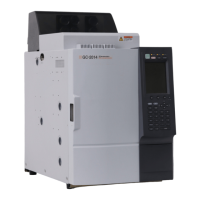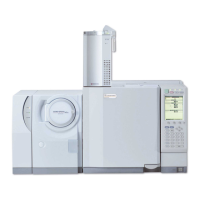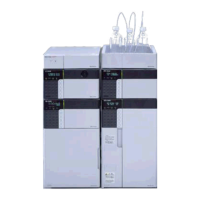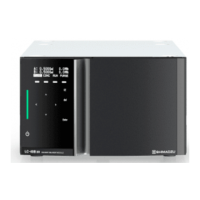13 Detector
13.1 Hydrogen Flame Ionization Detector (FID)
159
GC-2014
13.1.4 Setting the detector gas flows(APC)
The FID detector gas consists of makeup gas, hydrogen and air. The makeup gas is inert
gas supplied to the detector to prevent peak tailing and optimize FID sensitivity. Usually, the
carrier gas is used as the makeup gas. Hydrogen gas and air are supplied to be combusted
inside the detector, creating the FID flame.
13.1.4.1 Screen description
Select [Det Gas] (PF menu) from the [DET] key main screen to display the flow screen
shown in Fig. 13.1.5.
When the “Start Flow” status is selected on the [SYSTEM] key screen, the makeup gas
flow starts. Just before the ignition procedure begins, hydrogen and air flow starts.
Selecting “Stop Temp/Det” status from the [SYSTEM] key main screen, gas flow stop.
Fig. 13.1.5 Setting the detector gas flows
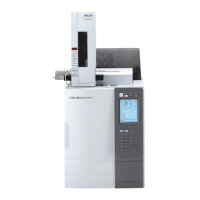
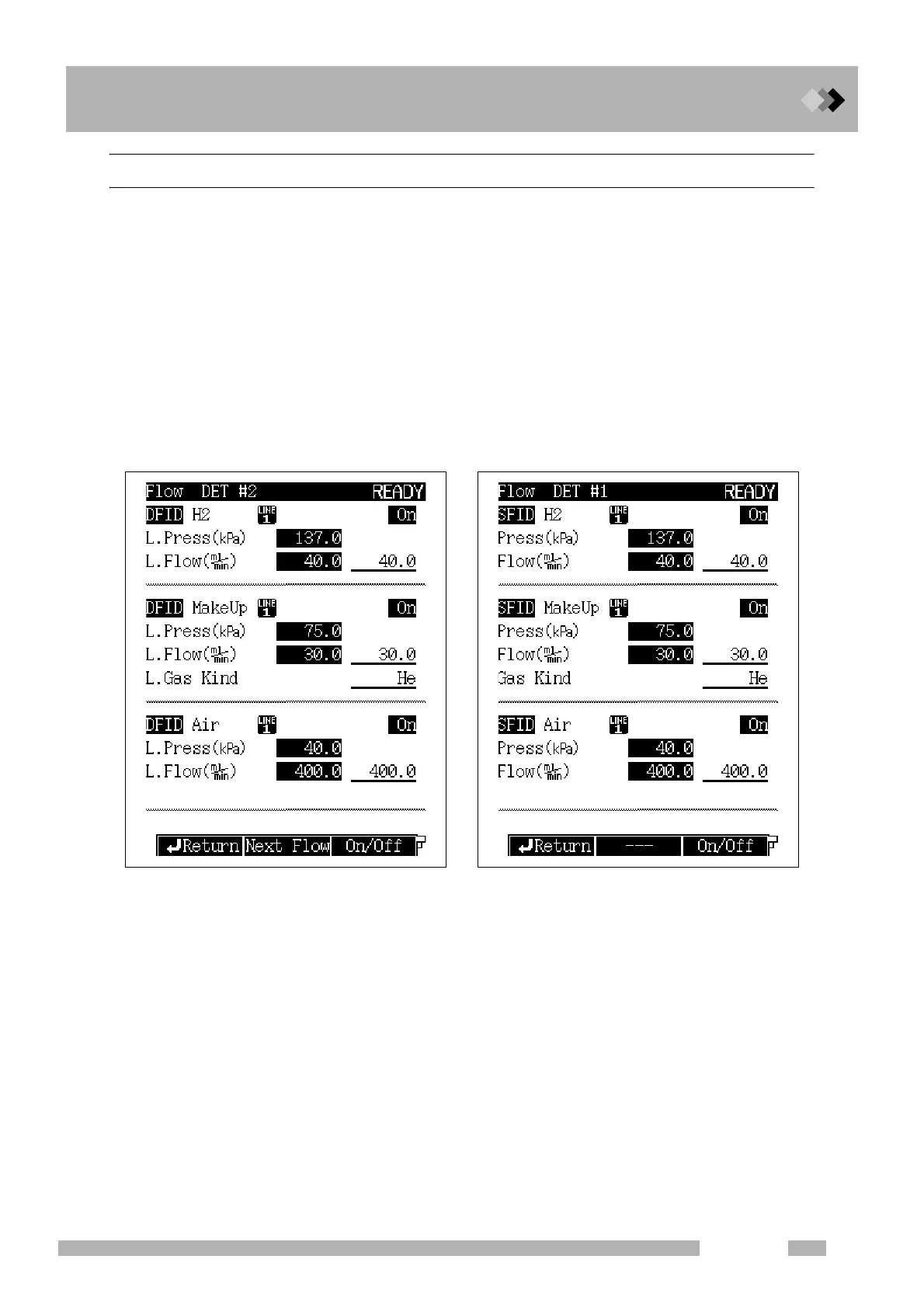